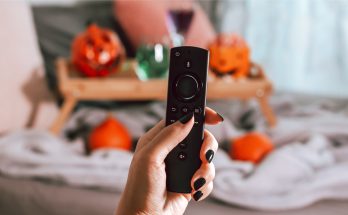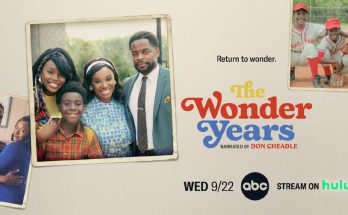I never missed an episode of The Office when it aired on NBC from 2005 to 2013. As an OG of the long-running series, I jumped for joy when Jim finally asked Pam on a date. I cried when Michael moved to Colorado to be with Holly. Right up through the last season, when the characters finally viewed the documentary, they had been the subjects of the past nine years, I was with them through it all.
That final season when goofy and ever-optimistic Andy Bernard failed his audition for an “American Idol” style show, he sat down on the stage and cried. Told he couldn’t stay there, he replied, “Oh, I can so just sit here and cry!” That’s exactly how I felt when the final episode faded to black. “I can so just sit here and cry.”
Fortunately, even before the show ended its broadcast on NBC, the early seasons began showing on Netflix, which was then transitioning from a DVD order service to a new technology called streaming. By the time the last show aired on NBC, a whole new generation of fans was devouring the series on Netflix.
The show, which has moved to NBC’s streaming platform Peacock, is more popular now than when it originally aired and is by far the most-streamed show across all services.
My kids were among the new wave of diehard fans, particularly my daughter. Back in her high school days, The Office was our thing; something we shared like a favorite sweater. The show became the background music of our lives. If we weren’t sitting down watching together, we let the episodes stream one after another while we carried on with chores, studying, or work.
We spoke Office-speak, repeating “that’s what she said,” “I’m not superstitious, but I am a little ‘stitious,” and “everbody stay calm,” whenever the opportunity presented. The characters inside jokes became our inside jokes. We talked about the characters as if we worked across the hall, or back in the “icky” annex with Toby. Everyone we knew became associated with a character, “he’s a Creed,” “she reminds me of Meredith,” or “that’s so Michael Scott.”
Now we live apart now, but we still stream The Office occasionally when we get together. It’s a nostalgic experience for both of us, bringing us back to the days when our family was all under one roof, going to work and school– living simply, like Jim and Pam and the rest of the office nine-to-fivers.
It may seem odd to wax nostalgic over a TV show, but pop culture is great for bringing people together, and feeling connected to others is what nostalgia is all about.
Dr. Clay Routledge, professor of psychology at North Dakota State University and nostalgia expert, wrote in an article for the Institute for Family Studies that nostalgic memories are usually social memories involving intimate relationships between family members or friends. Dr. Routledge said that while people mostly recall big family events like holidays, vacations, or reunions as nostalgic, minor events can create nostalgic memories also.
Originally, the term nostalgia referred to homesickness, but nostalgia eventually came to mean a longing for a past time of life, usually a time that seemed better, easier, or more fun. Nostalgia is created by anything that evokes feelings or memories of pleasurable past events, like family photos, hit songs from your high school days, movies you watched as a child, or your favorite sitcom.
TV shows are great fodder for nostalgia. Looking back to my childhood, shows like Happy Days, MASH, the Carol Burnett Show, and The Bob Newhart Show bring back memories of my siblings and I sprawled on the shag carpeting in front of the television with our parents on the sofa behind us. Our Sunday nights meant a steak and Caesar salad dinner with Mutual of Omaha’s Wild Kingdom, followed by the Wonderful World of Disney, and Sonny and Cher.
Nostalgia plays an important role in connecting us with others, but it also helps us find our own identity and helps us navigate through life changes. In an interview on the podcast, Speaking of Psychology, Dr. Krystine Batcho, professor of psychology at LeMoyne College and nostalgia expert, said nostalgia can help us through good or bad changes in our lives by reminding us who we are and what we have come through. (I will forever be inspired by Mary Tyler Moore throwing her hat in the air to her theme song lyric, “She’s going to make it after all!”)
Watching The Office together created nostalgic memories for my daughter and I that reached far beyond Michael’s cringe-worthy antics or Jim’s and Pam’s romance. The show served as a springboard for discussions on relationships, decision-making skills, work-life balance, and how to pull off the ultimate office prank.
When my daughter broke off her high school romance, we developed a new way of describing the ultimate guy. “One day,” I told her, “You’ll find your Jim.” When she struggled with teenage girl drama, laughing over the petty disputes between the members of the PPC (Party Planning Committee) helped break the tension.
The show carried us through some dark times when her father and I were separating. When the day was grey, and the mood was blue, nothing helped like a bowl of popcorn, a warm blanket, and The Office. Those “Netflix and chill” days in front of The Office are some of my happiest memories with my daughter. I will gladly continue to pay for Peacock so that when my daughter comes over, we can visit our Office friends and recall those bygone days when even if the worst thing happened– like Michael hitting Meredith with his car or Stanley having a heart attack during the fake fire drill– everything would turn out OK.
Nostalgia is bittersweet. It can feel good to remember happy times from our past, but it can also hurt to know those days cannot be re-lived. When we share nostalgia with our children, we have an opportunity to show them that the simplest things, like watching a show or listening to music together, can become powerful memories. In an age when teenagers and young adults are bombarded with the message that they should live a life worthy of sharing every moment online, nostalgia teaches us the opposite: that it’s the smallest, most intimate events that we cherish most.
As the filming of the fictional documentary that was the basis of the show was concluding, Pam wondered why people would be interested in watching regular office workers leading their normal lives. Later they gathered to watch the documentary together, and we, as viewers, watched the characters become nostalgic watching themselves. The characters got it: it’s all of life’s little moments that create nostalgia. As Pam Beesly wisely said, “There’s a lot of beauty in ordinary things. Isn’t that kind of the point?”



